|
The Cuyahoga Valley hasn’t always been here. Time, water, weather, ice, and shifting continents created it. How and when did it happen? There are clues in the rocks. And if you know how to find those clues, you can learn a lot about how a place came to be. This is what geology is all about. In geological time the Cuyahoga Valley is just the latest chapter in a long interesting story of how northeast Ohio came to be. Millions of years of soaking seas, rushing rivers, and glaciers formed, erased, and reshaped the land into the rock ledges, gorges, waterfalls, and snaking river found today at Cuyahoga Valley National Park (CVNP). 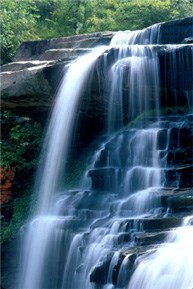
© Sylvia Banks Oldest Is DeepestRock clues to the history of the Cuyahoga Valley can be easily found in some of its most scenic sites, like Brandywine Falls and Tinker's Creek Gorge. These are places where rock that was once deeply buried is now in plain sight. Rushing water and scouring weather cut into the rock, like a knife into a cake, leaving the layers easy to see-and read. Reading the clues in rock layers can be like traveling back in time. Rock layers are laid down, or deposited, from the bottom up. The park's deeply buried layers are old, and the dirt you walk on is young. The rock layers under the soil, called bedrock, get ever older as you go deeper down. How old exactly? Some of the visible bedrock in CVNP is more than 400 million years old. This is long before dinosaurs-or reptiles of any kind-roamed Earth. It was even before plants had flowers. 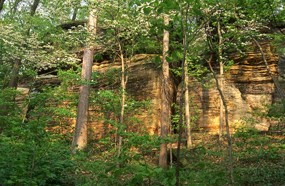
© Tom jones Silty Shale, Gritty Sandstone, Pebbly ConglomerateAn ancient sea covered what’s now northeast Ohio 400 million years ago. Big toothy fish and sharks swam there. Silt, mud, and other sediments washed into the salty waters and settled onto the sea floor. Over time the weight of the stacked layers of sediments crushed and squeezed them into a dark gray rock called shale. Fossils of ancient shelled creatures called brachiopods and other invertebrates are found in CVNP’s shale layers. 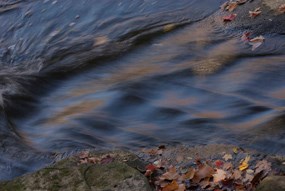
© Jack Rigby Erosion and DepositionThe rock history of the Cuyahoga Valley is missing quite a few chapters. While very old 350-million-year-old rocks are common, newer 150-million- or 50-million-year-old rocks are hard to come by. You won’t find any rocks from the dinosaur days, for instance. What happened to these rock layers? Erosion erased them. An ancient ancestral river carved out the original Cuyahoga Valley many millions of years ago. Its flowing waters helped erode away the rock layers before the Ice Age arrived. 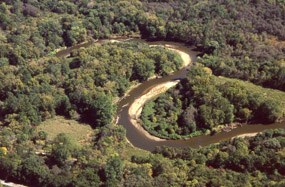
NPS Collection A New River ValleyThe Cuyahoga Valley didn’t start to look like it does today until after the glaciers left. Lake Erie itself only settled into its current home 4,000 years ago. Once free of the ice sheets, the Cuyahoga River went to work. The young river washed out glacier leftovers, re-carved old valleys into steep ravines, and cut through bedrock. 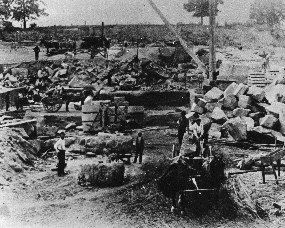
NPS Collection Cuyahoga Valley geology created a wide variety of landscapes. These provide habitat for many different kinds of plants and animals. The gorges and ravines are wet, cool homes for salamanders and moss, for example, while drier woodlands thrive on sunny valley slopes. People, too, have long taken advantage of the Cuyahoga Valley’s rock history. Settlers built quarries to dig out the over 320-million year old Berea sandstone for stone blocks and grinding wheels. You can see buildings in the park today made from the tan gritty stone. The shaping, carving, and reshaping of the Cuyahoga Valley throughout its geological history is part of what makes it such special place. |
Last updated: September 27, 2024
